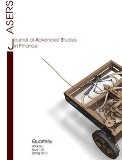SOURCES OF EXCHANGE RATE DYNAMICS IN THE EUROPEAN TRANSITION ECONOMIES
SOURCES OF EXCHANGE RATE DYNAMICS IN THE EUROPEAN TRANSITION ECONOMIES
Author(s): Rajmund MirdalaSubject(s): Economy
Published by: ASERS Publishing
Keywords: exchange rates; exogenous shocks; structural vector auto regression; variance decomposition; impulse-response function; panel data analysis
Summary/Abstract: Exchange rates in the European transition economies are currently exposed to the exogenous shocks as a result of higher uncertainty on the foreign exchange markets related to the various kinds of world economic crisis implications. Higher vulnerability of exchange rates of these countries to the exogenous shocks reflects decreased confidence of financial markets to the recovery process as well as an ability of the governments to sustain persisting fiscal pressures leading to higher fiscal deficits and public debt. Another issue that emphasizes the role of exogenous shocks in determining the exchange rate development in the European transition economies is the ability of national central banks to perform “suitable” monetary policy that would be able to support the recovery process in these economies while still being able to protect exchange rate of the national currency against speculative attacks and to keep exchange rate stable in the medium term horizon. In the paper we analyze the sources of exchange rate movements in the European transition economies (Bulgaria, the Czech republic, Estonia, Hungary, Latvia, Lithuania, Poland, Romania) in the period 2000-2009 using SVAR (structural vector auto regression) approach applied on each country individual data as well as panel data. We decompose the variability of NEER and REER in these countries to permanent and temporary shocks. Impulse-response functions are also computed in order to estimate the behavior of NEER and REER after structural one standard deviation innovations. The relevant outcomes of the analysis we compare with the results of the tests for the whole euro area (represented here by old EU member countries - EU-12 group). This approach helps us to understand the common as well as differing features of NEER and REER determination in the European transition economies and the old EU member countries.
Journal: Journal of Advanced Studies in Finance (JASF)
- Issue Year: I/2010
- Issue No: 01
- Page Range: 60-71
- Page Count: 12
- Language: English
- Content File-PDF

